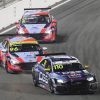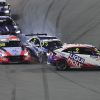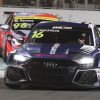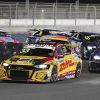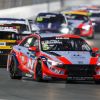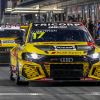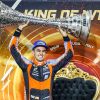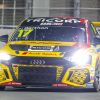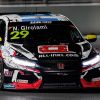Feature: Ford make their point in the WTCC
Ford took their first points of the 2012 FIA World Touring Car Championship season last weekend in Marrakech, Ford’s first since the 1987 WTCC. We have a little look back of the US marque’s history in the WTCC.
Ford’s history in the WTCC has been a varied one. In the first ever World Touring Car Championship in 1987, the black and red Texaco liveried Ford Sierra RS500s of the Swiss Eggenberger Racing team remain an iconic image in the racing world, despite the troubled first attempt to take the European Touring Car Championship to the world stage.
Ford entered three cars into the very different ‘first’ WTCC, which featured hours long races with driver changes and Group A cars, the two Eggenberger cars as well as Andy Rouse’s own Sierra RS500.
Eggenberger missed the first round of the year excluded before it had even begun at Monza because of a non-homologated engine management system, so it was left to Andy Rouse’s Sierra to lead the way before retiring after just 11 out of the scheduled 86 laps.
With the EMS now homologated for Jarama, Klaus Ludwig put the Sierra on pole position, but he and team-mate Pierre Dieudonne dropped back to fourth in the race as the Sierras struggled with tyre wear, having to pit more times than the rival BMWs of Schnitzer Motorsport, with Roberto Ravaglia and Emanuele Pirro winning the race.
At the fourth round of the Championship at the Nurburgring, the two Eggenberger Fords would sweep the front row with Klaus Ludwig and Klaus Niedzwiedz taking the first victory whilst Steve Soper and Dieudonne retired with a broken turbo.
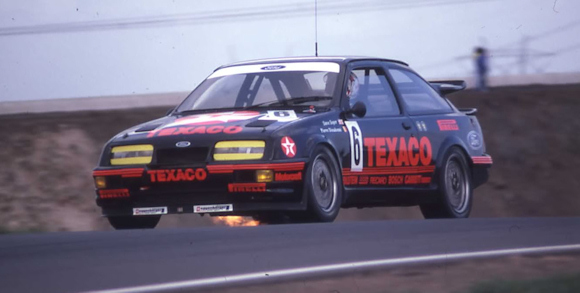
A new car for the sixth round at Brno saw the Eggenberger Sierras go from strong to unstoppable, taking the front row and finishing 1-2 in the race a clear lap ahead of the BMWs. Mechanical problems at Silverstone saw them finish down the order, but they’d bounce back at the next round at the Bathurst 1000 with Soper & Dieudonne leading Ludwig & Niedzwiedz to the flag, though months later would be disqualified after a protest over the size of the Fords’ wheel arches.
The Eggenberger Fords would win the next three races, but with the Bathurst disqualification announced before the season finale at Fuji, their Championship chances took a heavy blow. Ludwig and Niedzwiedz went on to win the race, but with Ravaglia’s BMW finishing third, and second of those entered for Championship points behind Andy Rouse, that was enough to give the Italian the drivers’ title by one point, though Eggenberger would secure the teams’ title.
The 1987 WTCC was hit by the mid-season withdrawal of Alfa Romeo, with only Ford and BMW as the fully committed manufacturers by the season’s end. The final round at Fuji had only eight full time entries with the rest of the field made up of local teams and drivers. The Championship was no more in 1988, returning instead as the ETCC, which itself would only last one more year, being resurrected in 2000 as the FIA European Super Touring Cup, the forerunner to the current FIA World Touring Car Championship.
Prior to the new WTCC in 2005, RS-Line Rotpunkt Sport entered a pair of Ford Focus Mk.1 ST170s into the 2004 ETCC, which were originally developed for the Deutsche Tourenwagen Challenge. The team’s drivers were Sebastien Grunert and Roland Asch, whom alternated with Thomas Klenke.
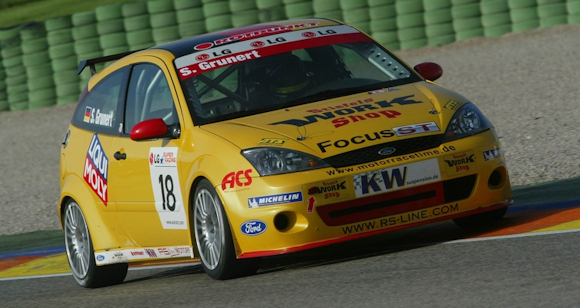
Hotfiel Sport, who’d built the cars originally and had won the 2002 DTC with Klenke, entered as invitational entries at Spa-Francorchamps and Oschersleben with Michael Funke and Patrick Bernhardt, with Klenke replacing Bernhardt at Oschersleben.
A few 13th places were the best results across both teams, but with the ETCC now becoming the WTCC from 2005, Hotfiel managed to woo Ford and began development of the new Mk.2 Ford Focus for the season, with drivers Thomas Jäger and Thomas Klenke onboard.
In the first free practice session at Monza, the Fords’ had shocking pace, in a bad way. Klenke was the fastest of the two in the extended field featuring cars from the Italian Touring Car Championship, down in 30th place, 12.8 seconds off the fastest time.
Thankfully the cars found more time by qualifying, but not much more speed with the Ford Focuses at the bottom of the speed traps, almost 10km/h down on the fastest car, which was the N.Technology Alfa Romeo 156.
Jäger qualified in 27th place with Klenke just behind, both 4.3 seconds down on the pole sitting BMW 320i of Dirk Müller.
In the first race, Klenke retired with an engine failure on lap five whilst Jäger went on to finish in 28th, the last driver classified on the lead lap and over a minute behind the winner of the first WTCC race of the new era, Dirk Müller.
In race two, Klenke didn’t even make the start whilst Jäger retired on the first lap.
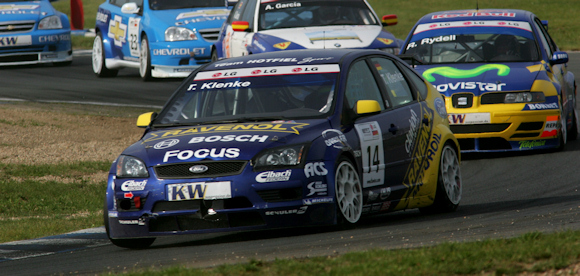
Team Principal Hans Hotfiel planned to enter up to four cars later in the year, and with aerodynamic concerns with the Focus, which against rivals Alfa Romeo, SEAT, BMW and Chevrolet was in fact the only hatchback at the time, had also planned to switch to a saloon model car later in the season.
The results weren’t much better in the next three rounds of the Championship, with Klenke taking the best result for the team during that period of 17th in race two at San Marino.
The team decided to skip the Mexico round in order to test and develop the cars, returning at Spa-Francorchamps with Michael Funke replacing Jäger, whilst the Mexico trip was more advantageous for the equally young Chevrolet team, with Rob Huff and Nicola Larini scoring the team’s first points at Puebla.
Improvements were still amiss for Ford at Spa as both cars lined up on the final row of the grid, with a shortened race for Funke as he was forced wide as Les Combes and famously rolled the car.
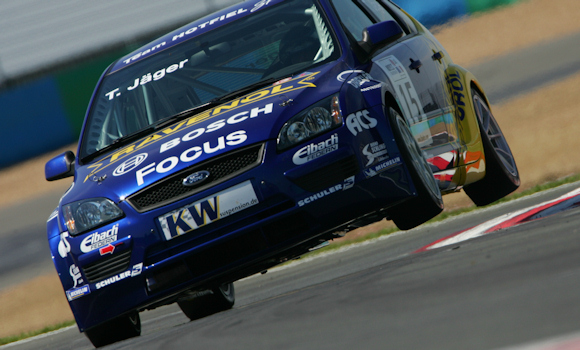
The next round was the team’s home race at Oschersleben, with the team picking up their best result in qualifying with Thomas Klenke qualifing in 11th, less than a second slower than the pole sitting BMW 320i of Jörg Müller. Klenke finished 10th and Funke 12th in the first race, the best result of the year for Ford. In race two, Klenke was running as high as seventh and looked set to score Ford’s first drivers’ championship points, before having to pit with a mechanical issue, but Funke was able to repeat the team’s best result of 10th in the race.
The results at Oschersleben gave hope to the project, with then Ford Motorsport boss Jost Capito stating they will probably remain involved in the Championship in 2006.
At the next round in Turkey, the two Fords struggled again, both qualifying far down the field in 18th and 19th places. An engine failure put Funke out of races one and two, with Klenke also retiring in race one and finishing 17th of the 18 runners at the line in the second race, seemingly making Oschersleben look like a flash in the pan.
The next race at Valencia saw the first pole for a hatchback in the WTCC. Sadly for Hotfiel it wasn’t their Ford Focus but the new SEAT León in only its third meeting, driven by Jordi Gené, with team-mate Peter Terting completing an all León front row in his first outing in the car.
Although Michael Funke had shocked and deceived all with second fastest in Free Practice 2, the two Fords would qualify in their ‘usual’ area of the grid down in 18th and 20th places.
Incidents in race one put both Fords out, with Klenke unable to make the start of what would be his final weekend in the Championship. Funke would finish race two in 18th place.
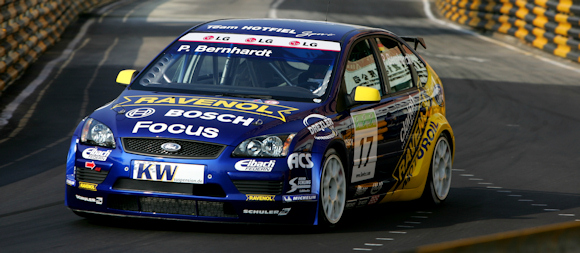
Hotfiel drafted Patrick Bernhardt in to replace Klenke for the season finale at Macau, and he would qualify as the fastest Ford driver in 20th at the Guia Race with Funke in 23rd, each 4.6 and 5.4 seconds down on pole sitter Andy Priaulx’s time.
Funke would go on to finish in 17th, one lap down in race one, with problems for Bernhardt seeing him finish three laps down in 21st. In race two, Bernhardt would equal the team’s best race finishes of Klenke and Funke at Oschersleben with 10th, albeit in a destructive race which only saw 11 cars of the 29 entered that weekend cross the finish line. That 10th would later become ninth when the Chevrolet of Alain Menu would be disqualified from third, having initially scored the team’s first podium as there wasn’t enough fuel left in his tank.
The Ford programme quietly disappeared over the winter break, with it being another seven years before Ford would reappear in the WTCC, this time with the Arena International Motorsport team from the UK. Arena were fresh from a successful few seasons in the British Touring Car Championship where they challenged the Team Dynamics Honda and RML Chevrolet teams for the title in 2010 with their LPG-fuelled Ford Focus ST, before developing the new Ford Focus for 2011.
The team from the south of England, which ran the works Honda programme in the BTCC between 2002 and 2004 with drivers including eventual three-time WTCC champion Andy Priaulx and three-time BTCC champion Matt Neal, returned after a brief sabbatical to the BTCC in 2009 with an independently entered Ford Focus ST, backed by insurance giant Aon. The car struggled in the first half of the year, but a new engine partnership with Mountune Racing in the second half of the year saw the team begin to move forwards and saw Tom Chilton take a shock pole position at the season finale at Brands Hatch. Although Jason Plato would steal the win from Chilton in a photo-finish of just 0.015 seconds, the Ford had now shown it could compete with the best at the front of the field.
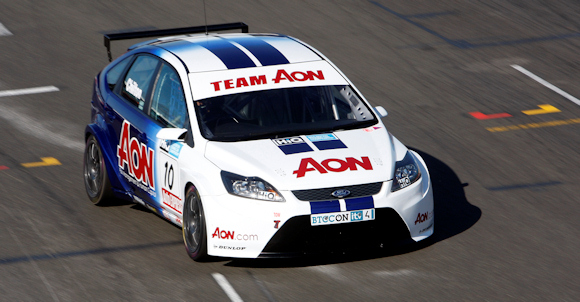
A switch to LPG fuel in 2010, coupled with a compensating two-litre turbocharged engine saw the team right at the forefront of the Championship with drivers Tom Chilton and Tom Onslow-Cole, though the team were reined in by the organisers over the course of the season with complaints over the power advantage of the team’s engine from the majority of the other teams. Although Onslow-Cole went to the season finale with an outside shot of the title, it wasn’t to be with Jason Plato securing the first title for Chevrolet in the BTCC, though the team did win both the independent teams’ and drivers’ titles with Chilton.
Arena’s success in 2010 had stirred up even more interest from Ford, and the team were signed up to run the new Global Ford Focus, dropping the controversial LPG turbo engine for the BTCC’s new standard Next Generation Touring Car turbo engine, and selling its three cars to rival independent team Motorbase Performance.
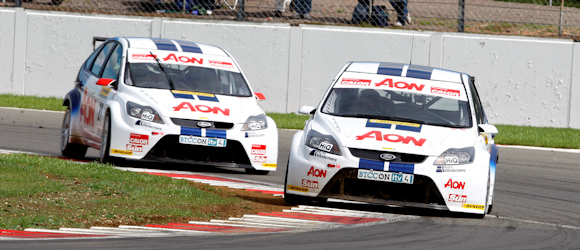
The cars built by Arena took six wins in 2011, four with Mat Jackson in the car they’d sold to Motorbase and two for Tom Chilton at Knockhill and in their final race in the BTCC at Silverstone. The results probably didn’t meet the team’s expectations in a season which was heavily focused on equalising the entries with the new car platform being introduced, and to maintain the competitiveness of those cars which had continued with normally aspirated engines.
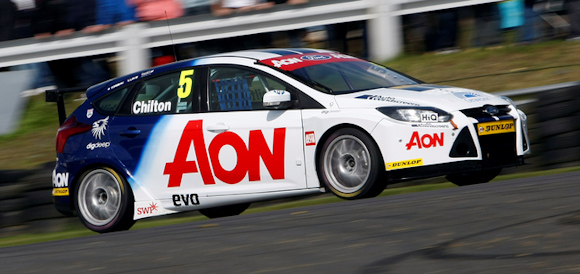
Arena announced early in the year they were preparing to enter the WTCC in 2012, with Tom Chilton linked with the programme early on after having a long relationship with the team lasting back to 2003 in their Honda days. Italian stars Fabrizio Giovanardi and Gabriele Tarquini were also linked with the team, but the team eventually opted for an all British line-up of Chilton and 2011 BTCC independents’ champion James Nash to spearhead their first year of what’s intended to be a multi-year programme in the World Touring Car Championship.
Entering a championship with manufacturers and drivers who have been competing for the best part of seven years if not longer, the two Ford Focuses had encouraging performances in the first two rounds at Monza and Valencia, with the team giving themselves achievable targets to reach in the early going. An aspiration to reach Q2 was realised last weekend in Marrakech, with both cars making the top 10, giving Tom Chilton a strong starting point in race one and James Nash pole position in race two on the reversed grid second race.
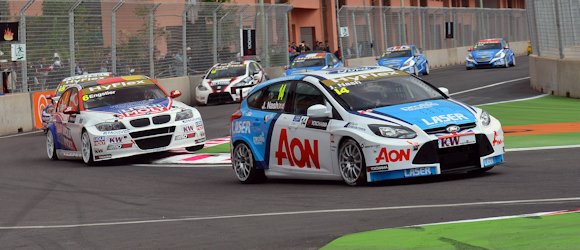
Chilton had a strong first race, driving up to fifth before settling down in seventh, whilst held on the lead for as long as he could, holding off the experienced Franz Engstler in his BMW for five laps before the indomitable Chevrolets worked their way through and Nash dropped down the order to finish in sixth, which is now Ford’s best result in the modern era WTCC with both drivers scoring Championship points that weekend.
With nine races to go and plenty more of development to come on the car, a third car potentially on the horizon if the right opportunity comes along, and increased manufacturer interest which may entice Ford into giving the team its full support, the team are looking good to being the next challenge to Chevrolet in the next few years.

